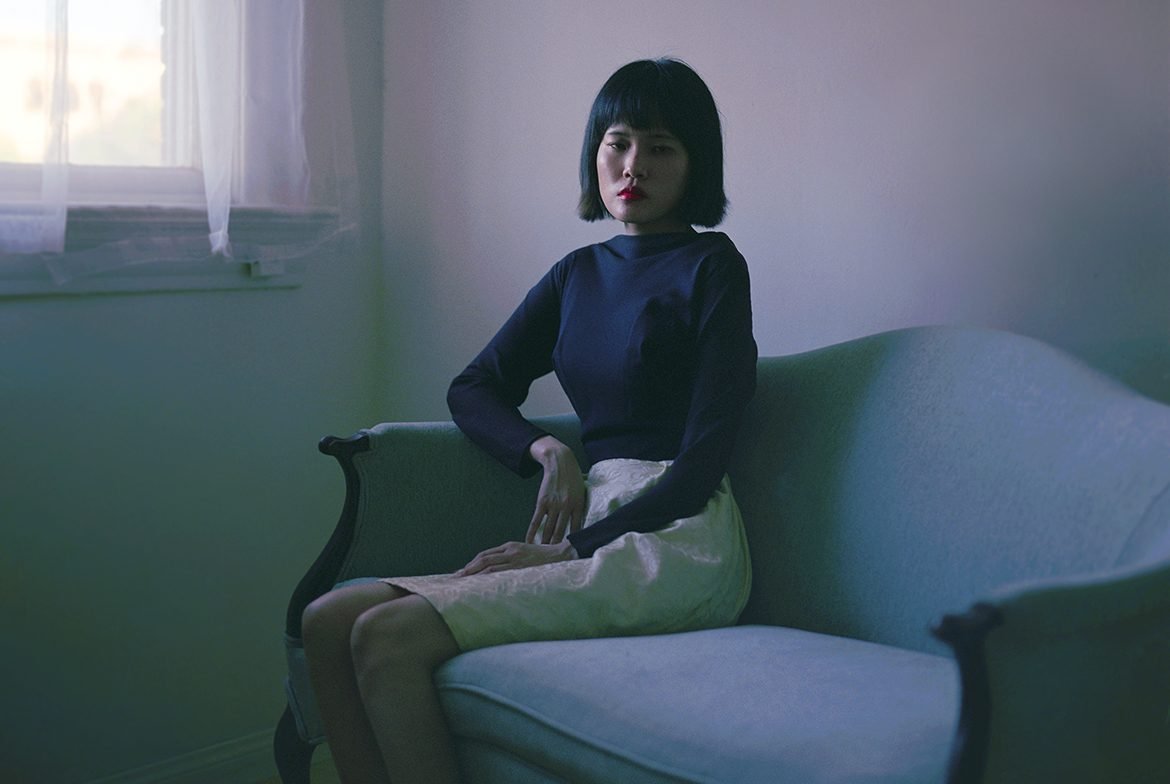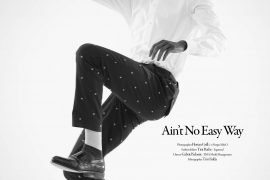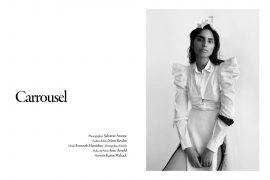This one word, “interiors,” sums up perfectly a large portion of the images of American photographer and art director Todd Anderson. His figures, more often than not, inhabit a space both physically and personally internal in equal measures, seemingly with a particular emotional quality at play within the frame. Additionally, above an assured control of tone and atmosphere, there is generally a layer of the psychological that allows the observer to fall into the frame with their own psyche, feeling closer to the subject within and coalescing their own interior. And while there is a soft, slightly sombre tonal palette that he often uses to evoke a period quality, the images themselves feel equally as modern on the surface. In his own words:
“While I try to avoid modern elements in the frames, I am not trying to make period pieces. I just as often like juxtaposing eras, or having something subtly off in the frame, even if that is the subtle contemporary attitude of the subject themselves that is transparent. I avoid the modern in hopes to keep the works timeless, but never to fabricate something vintage.”
Anderson goes on to mention that shooting on film — as are all the examples shown here — adds some distance from the modern, but he still wants the images themselves to feel modern in emotion and tone. That it is more of a desire to not quite specify when the image may have been created, in order to remain ageless, but not to be so far removed as to not connect to the present-day viewer. And even compositionally, he stresses that he wants the images to feel modern by way of minimalism and a degree of space in the frame; that the frames are empty enough to breathe as contemporary architecture might.
Further, while Anderson explains that he has become less interested in concepts for his personal work or even specific ideas prior to a shoot, he still seeks to create a framework that fosters creativity, tone and atmosphere. Juxtaposing various elements with the subject and allowing everything else to unfold naturally within that environment, allows him to find what feels harmonic for the individual inhabiting that space. Even if he will admit it is sometimes repetitive and minute micromanagement of direction of the subject to the camera and/or light, but the end result is still aimed at capturing something truthful in the interior of the subject.
“A truthful expression is the most important element in an image to myself, but I cannot go as far as to say that a captured expression is not tainted by the circumstances surrounding the shoot. That “truth” may as easily come from a place of slight discomfort or boredom, as it is does from comfort or trust. But I prefer honesty in the moment, nonetheless. And I usually aim for an emotion surrounding trust.”
You can view more of Todd Anderson’s work on his website and follow him on Instagram.
I. Małgorzata in Warsaw, 2017

The subject portrayed here had not modelled professionally, which can be said of all but one of the subjects depicted here. Beyond a doubt, there is something special about working with individuals from this particular lineage. Certainly, the French director Robert Bresson was on to something with his unwavering use of non-actors, and this ability to capture an expression that comes from a very honest and truthful place — even if it requires more patience than working with the seasoned professional — is quite profound. But it requires that trust to be built prior to or in the midst of a portrait sitting, and if I may speak for both myself and the subject, that trust allows for a certain amount of intimacy between the lens, and is what allowed this beautiful expression to be captured here. I still recall being on the other side of that image and seeing it transpire in the moment. It is one of my favorite portraits for this reason alone.
II. Elanna in San Francisco, 2018

Like many photographers who have developed a preference for shooting almost exclusively with available light, I often find myself arriving at a location with only a few hours of light remaining and no previous knowledge of the space. This leaves me in a state of discovery as to the direction the windows face and the temperament of the sun that particular day. In this instance, only one subject placement presented itself that appealed to me from compositional, lighting and environmental standpoints. Luckily, that one placement was quite favorable. But the slightly impressionistic quality of the grain structure, the muted palette, the interplay of shadows and highlights, and the subject’s contribution of this unique and wonderful pose (and additionally, her inner thoughts on display) bring me back to this image to muse on.
III. Paulina in Warsaw, 2017

There is a quote, the source of which escapes me at the moment, that I often reference and it is in relation to this idea of just ‘painting the corners’ in a work of art in any medium, be that the lyrics of a song or a painting, for example. This, of course, to allow those who view the work to place their own experiences in the undefined center of the piece, or within any ambiguity left open to interpretation. This, all with hope there is a connection on a personal level. I cannot say I am always successful in such attempts, but I believe enough fragments were both given and left behind here in the image to facilitate this. Additionally, I want to add that I am personally drawn to this image for the almost weightless way the subject inhabits the frame — not too unlike a figure in a Tarkovsky frame — and how much emotion is displayed, even though she is facing away from the viewer.
IV. Lindsey in Orange, 2018
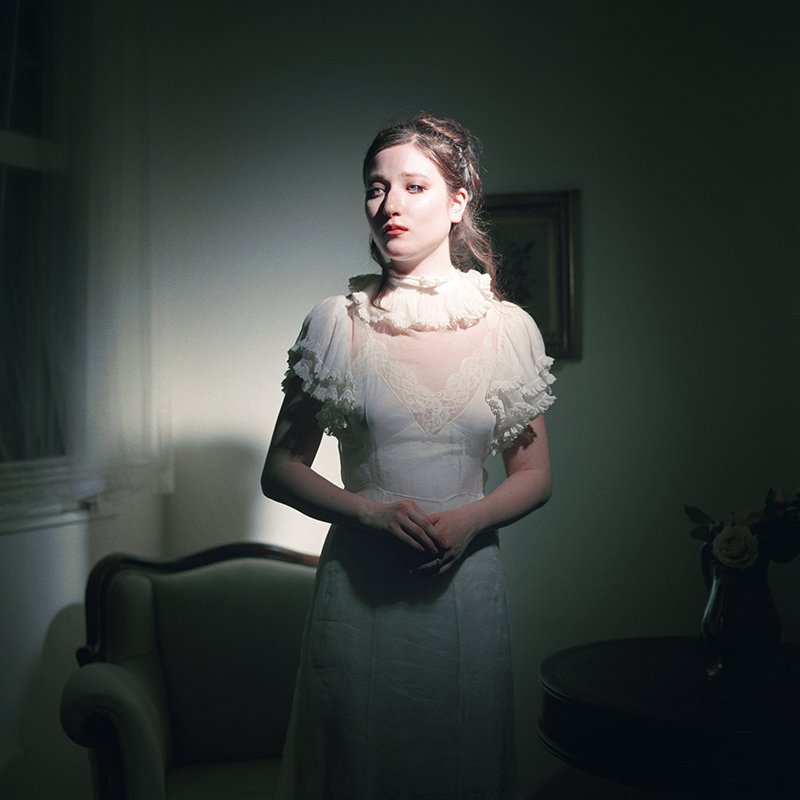
It was not a connection I set out to pursue, but I now see that I must share some of the same psychological attributes in my own personality as that of the painter Edward Hopper. Mind you, I am not comparing his masterful works to that of my own, but find myself wondering if I share some of this same query within myself, as I seem to be drawn to figures in thought in the frame. This relates to what I had previously referenced about introducing the element of ambiguity in a work: the “why is the figure in thought?” “what might those thoughts be?” “has someone just left the room?” or “has someone just entered the room or will be entering soon?” And if so, “what is the subject’s relationship with that absent figure or the space in general?” I sense some of that within the image here. I also want to make note that even with the use of artificial light as was required in this environment (the only use in the selected images here), the expression contains little artifice. The naturalness attributed to the subject being in an authentic place in her own interior.
V. Anna in Warsaw, 2017
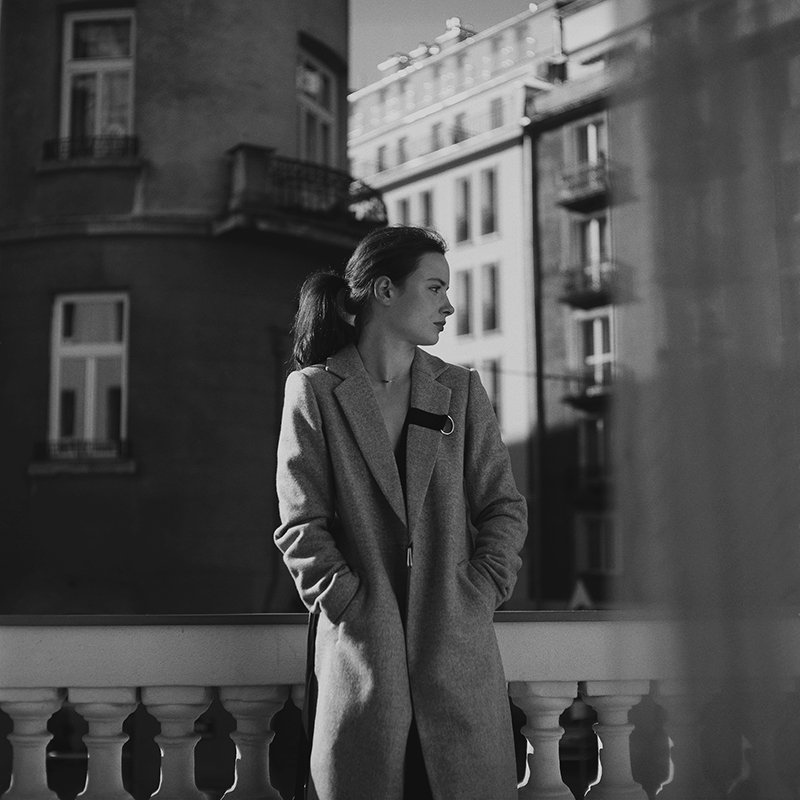
It is likely obvious that environment and background information are usually prevalent in my portraits, a reflection of my desire to introduce a significant element of the environment in which the figure exists, and with this desire to form a story for the viewer. In light of the fact that I have on more than one occasion considered studying the craft of film making more thoroughly, I have settled upon — at the moment — being content to endeavor to “tell a story in one frame.” But creativity has not been given short shrift in this process, as I have found great inspiration in pulling narrative threads out of some of my single frames “after” they have been produced and not, as one might imagine, “before.” The improvised nature of a shoot, with its juxtaposition of place, atmosphere and human element, can work almost like a creative study for latter filmic story propositions. I hope that a viewer’s imagination sometimes senses this contribution in the frame in the images I capture. And this poignant frame of the talented Polish actress Anna Prochniak, is one such starting point for my own cinematic imagination.
VI. Selena in Orange, 2017
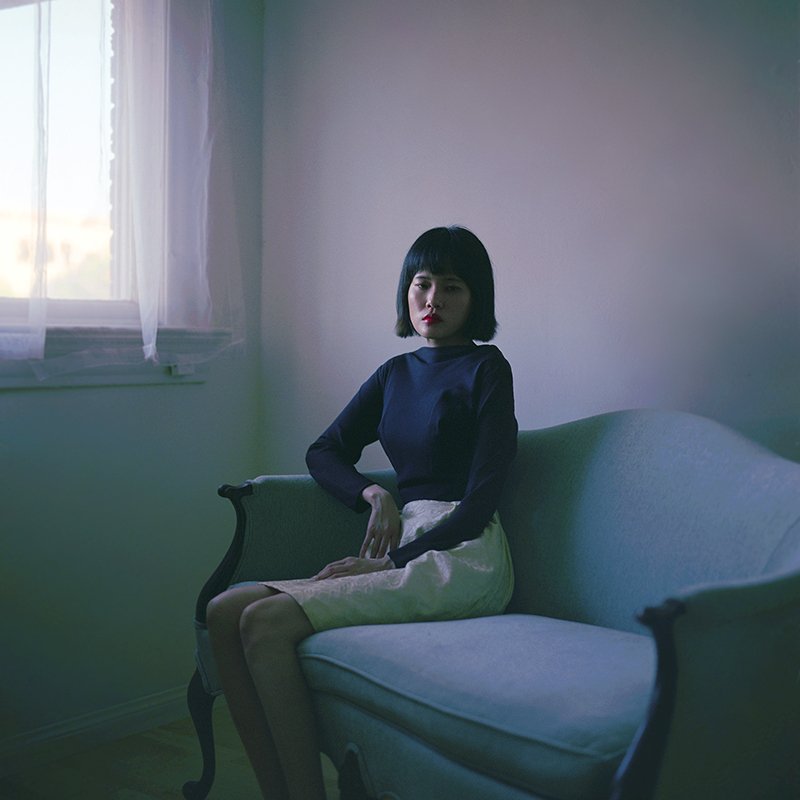
I’d like to touch briefly on the dual nature of the “interior” theme, in which I am always striving to capture some of the “psychological interior” of the subject, which I place as the most important element of any successful frame I have ever taken. It is, of course, that depth behind the eyes that bares an inner truth — but I also reference the “interior” of my own self, which as in the work of any artist, cannot escape being revealed. Interestingly, beyond the more opulent and clever side of the dual nature of the “Interior” theme, I will admit that I am drawn to actual physical interiors not just for their environmental contribution, but for the shelter they provide the subject. They can allow more trust to develop, and with the intention of discovering more intimacy between the lens and to capture more apparent honesty and truth being the objective, the environment provides that safe place. The subject here sits in an ill angled sofa that feels not quite right and is pushed to the furthest edge in case another figure should invade her space. There is something cunning about this frame that I rather like. Something discovered at the moment, and not by design.
VII. Gloria in Bordeaux, 2019

Quite often, I look back through images I have taken over the last number of years, and they are like a timeline of my life — both places I have been, or individuals I have encountered along the way. This image, taken in France earlier this year, was the fruit of conversations with a talented photographer from Italy, which resulted in her kindly meeting up with me in France and sitting for me while there. I had seen an image she shared online that captured an incredibly beautiful and honest expression, the sort of expression one might capture in one of a thousand frames. I did not know at the time the photo was, in fact, a self-portrait of herself. The expression in my photo, while not as powerful as the one I had seen in the subject’s own self-portrait, still contains a portion of the depth that haunted me and made me want to get to know this individual. I also admire this frame for the soft subtle elegance the subject contributes, as well as the way the tones, in general, fit so well with the emotional quality.
Feature by Demetrios Drystellas

